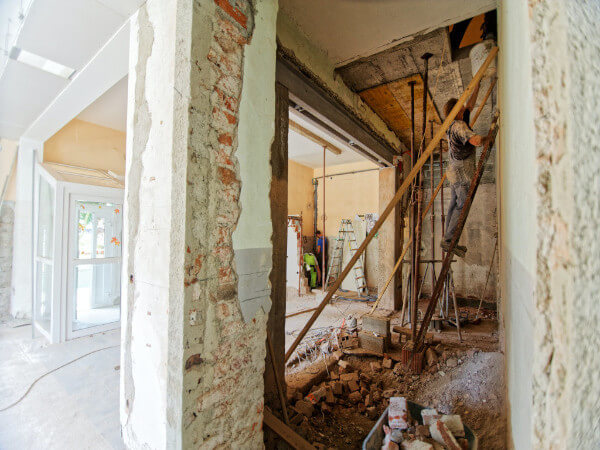Home » Construction Management (Page 2)
Category Archives: Construction Management
Top 10 Major Upcoming Public Building and Defense, Law Enforcement Construction Projects – Canada – December 2021

The accompanying tables show the top 10 largest upcoming Public Building and Defense, Law Enforcement construction projects in Canada. They are all in the planning stage and are mainly new projects, but may also involve additions and/or alterations.
![]()
Did you miss our previous article…
https://www.arizonasolarsociety.com/?p=1589
ANZ Infrastructure Industry Well-Positioned to Meet 2030 Benchmarks and Achieve Net Zero by 2050

In a first-time collaboration Autodesk (NASDAQ: ADSK), Australian Constructors Association, Consult Australia and the Infrastructure Sustainability Council have released a joint report to support industry in accelerating a net zero future through the design and construction of the infrastructure pipeline.
The report, A net-zero future delivered through our infrastructure pipeline, signals that a whole-of-business, systems-based approach across asset lifecycles is required to accelerate the journey to net zero. This includes pulling key levers such as procurement, materials, methodologies, technology and people capability.
Jon Davies, Chief Executive Officer, Australian Constructors Association said, “The record investment in infrastructure creates opportunities for the construction industry to be part of the solution to net zero.
“We all have a role to play, and it must be performed in partnership. The report sets out the options and enablers for government and industry to use in mapping the path to low-carbon, climate-resilient infrastructure,” said Mr Davies.
Although the industry has a significant footprint it has already started to demonstrate the influence it can have on the reduction of emissions said Ainsley Simpson, CEO, Infrastructure Sustainability Council.
“The 24 As-Built Projects certified over the last four years by the Infrastructure Sustainability Rating Scheme reduced their whole of lifecyle emissions by 26.5 million tonnes of CO2e, which is equivalent to the 26 CO2e saved by the whole Australian economy in 2020,” said Ms Simpson.
There are many tools identified in the report which also map key enabling levers against asset lifecycle phase, as well as a net-zero delivery model to prompt and guide decision-making – from rethinking and redefining problems and solutions through to reducing carbon intensive materials and ensuring regenerative approaches are integrated in asset design and construction.
The report also presents real-world case studies to inspire project teams to utilise, adapt, scale and accelerate further innovation. Technology is also identified as a key enabler of decarbonisation.
Andy Cunningham, ANZ Regional Director, Autodesk, said technology supports the infrastructure industry with the tools they need to unlock insights, make better decisions, and achieve superior outcomes.
“Software helps automate complex processes and transform data into actionable insights that empower innovators to improve the impact of everything they design, make, own, and operate. Cloud solutions and connected data environments fuel innovation—across technology, processes, supply chains, and industries. This opportunity is only accelerating,” said Mr Cunningham.
The release of the framework follows the COP26 climate talks which called for accelerated decarbonisation before 2030 to keep global temperature within 2-degree limits, and preferably to 1.5 degrees.
“Strong leadership and collaboration across the industry is going to be required to achieve accelerated net zero and keep our sector globally competitive,’’ said Nicola Grayson, CEO of Consult Australia.
“Net zero is a shared responsibility. Through the collective members of the Australian Constructors Association, Consult Australia and the Infrastructure Sustainability Council, in collaboration with Autodesk, we are committed to working with industry and government stakeholders to drive the continuous improvement required to achieve this shared outcome. We look forward to working together to take action at scale and at pace,’’ concluded Ms Grayson.
The report is available for download here.
The post ANZ Infrastructure Industry Well-Positioned to Meet 2030 Benchmarks and Achieve Net Zero by 2050 appeared first on Digital Builder.
Did you miss our previous article…
https://www.arizonasolarsociety.com/?p=1545
Why Construction Needs an Effective Cost Management Solution
Tired of cost overruns?
Without a connected and centralized cost management system, projects often go over budget, over schedule, and can include costly rework. That makes finding solutions that work—and work well—all that more important.
Consistently however, cost overruns have become an expected part of projects in spite of their negative impact on already-thin profit margins. So the question is: What can builders do to be confident in their cost certainty from the get go, and actually hit that target throughout a project’s lifecycle?
This is where cloud-based cost management brings everything you need together into one platform—cost control to workflows, contract management, payment applications, and change orders. All of that works seamlessly together in an easy-to-work, easy-to-learn, and easy-to-use platform.
The infographic below will help you understand common project cost issues you’ll face without a centralized cost management system.

Get cost overruns under control
If you’d like to learn how to stay on schedule and on budget, check out The Construction Cost Control Toolkit. It’s a collection of digital resources built to help your teams standardize and accelerate their cost management workflows. Everything in there is yours, completely free.
DOWNLOAD TOOLKIT
The post Why Construction Needs an Effective Cost Management Solution appeared first on Digital Builder.
The Construction Industry’s Rocky Road to Recovery

We’re a little over a year and a half into the COVID-19 pandemic and the construction industry, like many other industries, is maneuvering several obstacles on its road to recovery. I think it’s important that we take time to understand what this means in the immediate and for the long-term.
![]()
Did you miss our previous article…
https://www.arizonasolarsociety.com/?p=1516
How Clash Detection Evolved Into Everyone’s Tool

Teams are changing their approach to collaborative design
Over the last several years, we’ve seen a major shift in the ways project teams work together and the requirements that owners put on contractors. Design-Build project delivery, lean methodologies, and joint ventures are at an all-time high, and accelerated by digital adoption from at-home work and the Covid-19 pandemic. In fact, 58% of owners said they’ve used or plan to use design-build, moving away from traditional design-bid-build (FMI).
This could be, in large part, because design-build projects are completed 102% faster than traditional design-bid-build (DBIA). As construction teams move towards an integrated approach, organizations from Architecture-Engineering firms to contractors and trades will need to adapt their processes and adopt standard ways of working to better communicate and coordinate in dynamic environments.
Do the benefits of tech-driven collaboration outweigh the risks?
The fundamentals of construction haven’t changed much over time. Schedule constraints, geometry conflicts, sequencing, safety, and quality will continue to challenge project teams and require the very best from problem-solvers in every organization. Firms that react to industry changes will improve on these fundamentals—helping them to save on unnecessary costs and capture back some time back in their day. Better collaboration across the project lifecycle will pad schedule margins, focus teams on delivering up-front quality, and provide leaders with the provable success history to win the right kind of work for their firm.
As competition for new work increases and governments apply more standards to the construction industry, firms must innovate or risk losing out on the right kind of projects for their portfolio. The challenge comes with “how” firms adapt and what paths they take to improve their delivery metrics. It can’t be enough to purchase the newest technology and call it a day. The real work comes with getting buy-in from project partners and unlocking the contributions from the entire team, from architects and BIM managers to subcontractors. This is especially important in the coordination process.
How clash management has been done historically
Today, much of the pre-coordination meeting work rests on the shoulders of a BIM manager. Models need to be sorted, uploaded, and aggregated. Navisworks is often a tool of choice to navigate models, check for clashes, and assign issues with views. Weekly coordination meetings pull together the shared expertise of the entire project team to assess issues and work together to troubleshoot and resolve issues generated by the BIM manager.
Oftentimes, however, these meetings focus too much on low priority issues—aligning models, resolving simple clashes among teams, and making sure previous decisions were executed correctly. Slow coordination among teams compresses the overall schedule, making clash resolved models more of a luxury in some cases.
Navisworks is one of the most trusted and powerful tools for refining models. Those who know it love it. And there are no indications this level of clash granularity is ever going away. But to keep up with moving deadlines and changing design elements, project teams need to find a hybrid approach to clash management; one where engineers, architects, and trades are taking part in a simplified and continuous model coordination process while the BIM Manager uses their expertise to focus on high value issues.
Clash management is now for everyone, not just BIM managers
It’s not enough to throw a fresh coat of paint on the old way of managing clashes and repackage clash detection for BIM managers. A shift in mindset needs to occur that gets the whole team engaged in clash detection. Fundamentally, teams need to be collaborating throughout the week to identify, resolve, and even prevent issues from the earliest stages of a project. The value in doing so, is a better reputation for quality and timely work, less time spent on non-optimal activities, and more time spent on solving problems before they hit the field.
Clash detection must be simple enough for anyone to use it.
Clash detection then, must be simple enough for anyone to use it. It needs to automate repetitive tasks, reduce the set-up time to near zero, and work in-conjunction with the tools people use every day.
Autodesk BIM Collaborate does just that. Anyone on the project team can set up a coordination space in a common data environment, and when files are added or updated there, they are automatically clashed against the other models. Clashes are automatically grouped by object, property, system name, or type name, giving the clash novice or seasoned expert easy ways to locate types of clashes for clearing. A clash tolerance filter dynamically changes the clash list, reducing the noise and focusing individual users only on larger clashes. Clashes are arranged in a matrix so everyone is aware of the problem areas and BIM managers can focus on specific disciplines or floors.
More on the technical side, project stakeholders using third-party authoring applications for design who also want to see their files aggregated and clashed, can see their work in a multi-model context with intermediary file types like NWC or IFC. These files can be aggregated and clashed alongside RVT and DWG files.
Once a clash has been identified as an issue, it is automatically shared across the entire issue eco-system. If a design lead identifies an issue in BIM Collaborate, BIM managers in Navisworks and engineers in Revit can pick up that issue in either of those tools. The assigned issue is then tracked in each of the products, desktop or web based, throughout the system.
This allows teams to communicate about issues in the tools they use day-to-day. And with a direct link to the web from desktop applications like Revit, design teams can get a quick health check on their work in a multi-model context.
Navisworks users who need to investigate issues to determine next steps can see the highlighted clashes in context to fully understand it. If there’s any ambiguity, they can comment on an issue, which is then available in Revit, other Navisworks applications, Autodesk Docs, Autodesk Build, and Autodesk BIM Collaborate.
Better business for all
With this level of connectivity, multidisciplinary teams can now communicate early and often in one place, using a common data environment as a single source for project files. Removing the barriers between teams and allowing multiple stakeholders to clear clashes improves design quality and the speed of work done in preconstruction phases. When coordination timelines compress, and they often do, it’s important to have more eyes on the constructability of a project to ensure the quality owners expect and field partners need.
Being adaptable means having the right tools for the right job. And in a world where immediate access to data is a necessary component to achieving positive project outcomes, teams need their tools to connect to a common data environment. When authoring tools, powerful clash tools, simple clash tools, and issues are all connected in one place, the difficulties of a fast-moving design-build project are no longer technological. Organizations can prove their ability to act with innovation and can build a reputation as being collaborative and predictably successful.
If you’d like to learn more about Autodesk BIM Collaborate and what it can do for your business specifically, please contact us for a demo. We’d love to show you around.
The post How Clash Detection Evolved Into Everyone’s Tool appeared first on Digital Builder.
Did you miss our previous article…
https://www.arizonasolarsociety.com/?p=1496
Gap Between Bid Price Increases and Material Cost Increases Is Narrowing

In the spring and summer of this year, a huge gap opened between construction bid prices that were staying low on a year-over-year basis and material input costs, also y/y, that were soaring into the stratosphere.
![]()
Did you miss our previous article…
https://www.arizonasolarsociety.com/?p=1488
State of the Construction Industry: November 2021 Roundup

Much-needed good news for the construction industry highlights the stories we were following in November.
Did you miss our previous article…
https://www.arizonasolarsociety.com/?p=1474
11 Construction Jobs That Work (Much) Better with Construction Technology

New software technology is helping many parts of the construction business go faster. See 11 hotspots where the rubber hits the road!
Did you miss our previous article…
https://www.arizonasolarsociety.com/?p=1471
A Return to ‘Acceptable’ U.S. Jobs Report for October; Canada’s Also Okay

The U.S. total jobs increase in October was +531,000 according to the latest Employment Situation report from the Bureau of Labor Statistics. A gain of more than half a million would have been met with cheering in any month prior to the pandemic. And it’s better than September’s +312,000 and August’s +483,000. But it still leaves total employment in the U.S. significantly below where it was in February 2020, just before COVID-19 touched down.
![]()
Further Slippage in U.S. Foreign Trade; Mega Projects to the Rescue?

The U.S. foreign trade deficit deteriorated further in the latest month, sinking to -$972 billion USD in September 2021, an unwelcome record. The shortfall comes entirely in the trade of ‘goods,’ -$1.178 billion. The ‘services’ balance, which includes business and tourism travel, plus between-country costs of transporting cargo, remained above water, +$206 billion USD.
![]()
Did you miss our previous article…
https://www.arizonasolarsociety.com/?p=1388